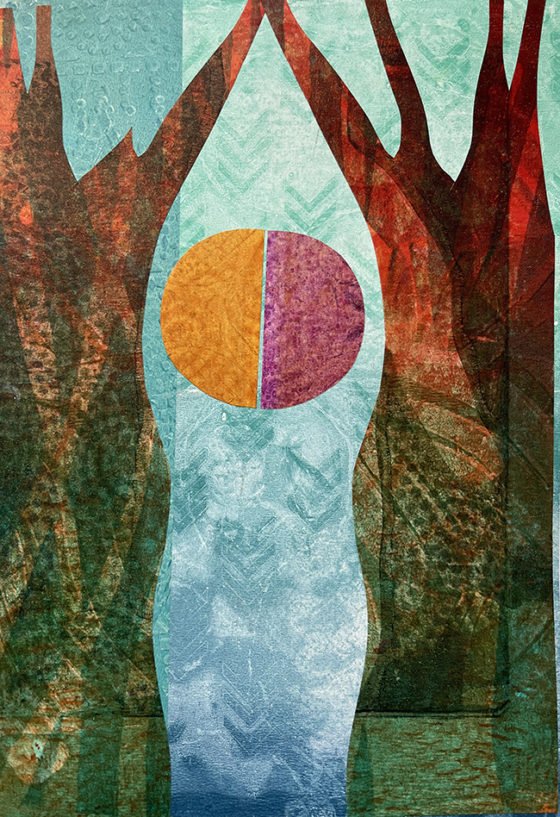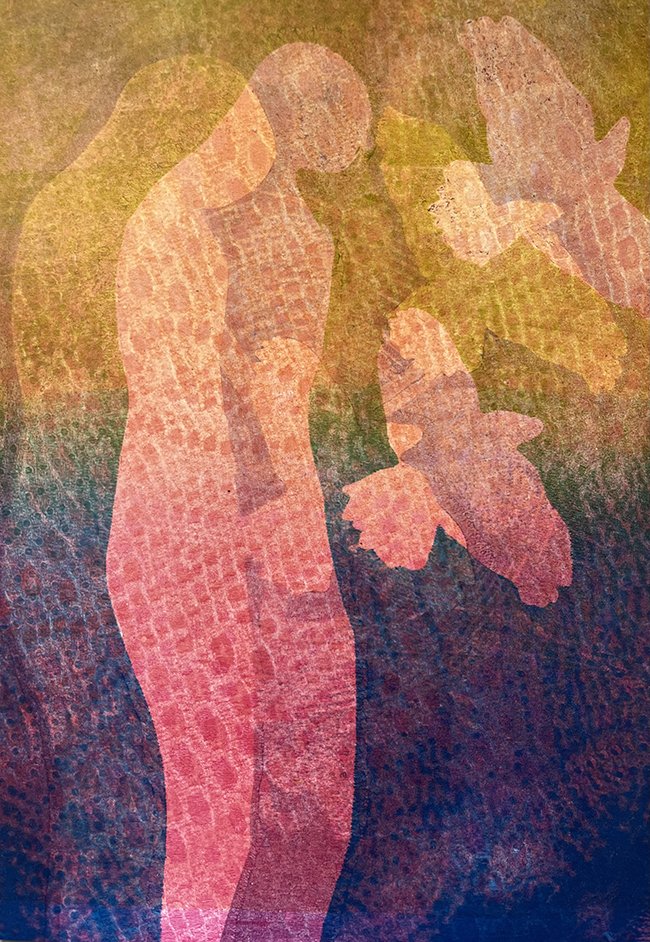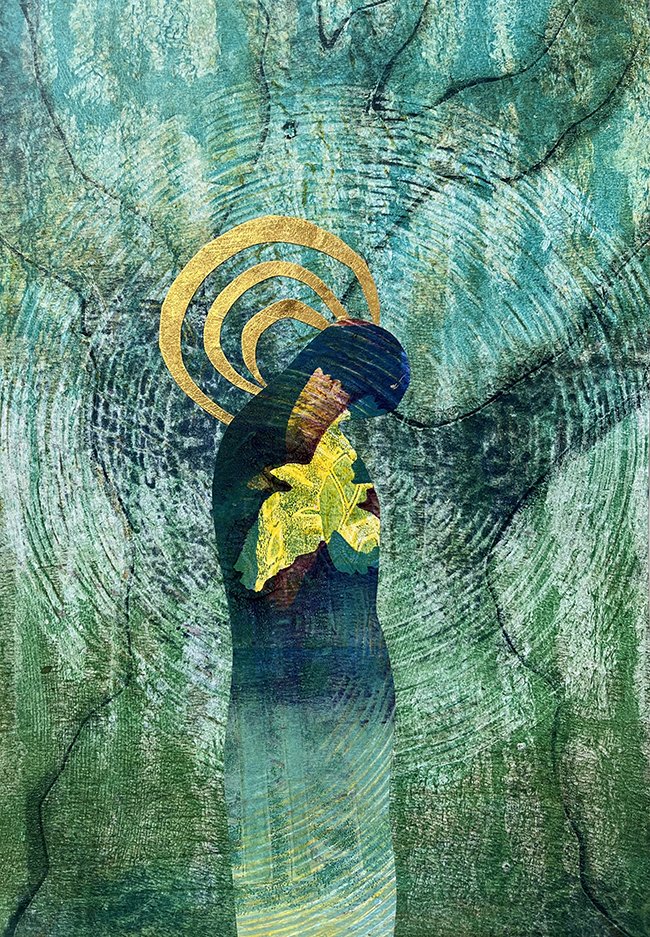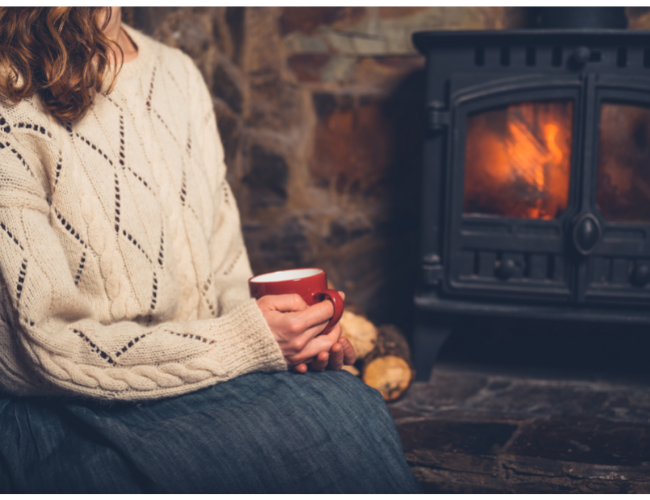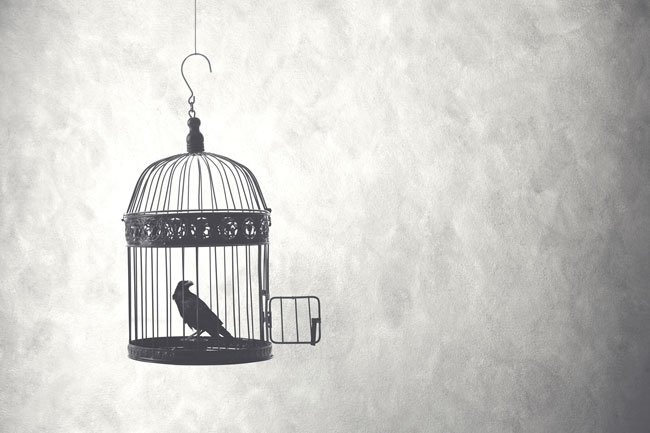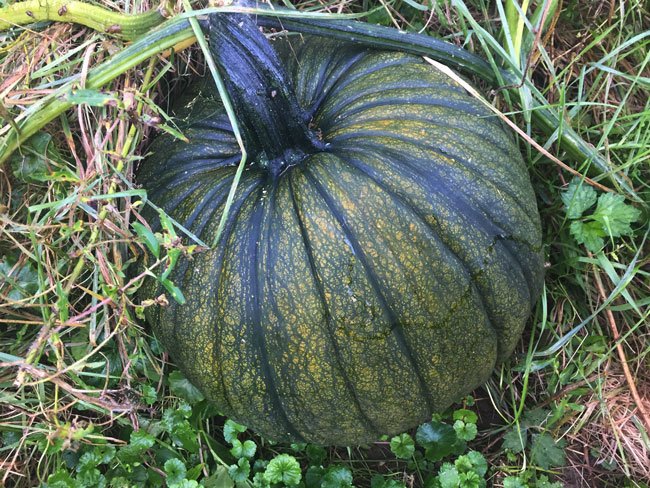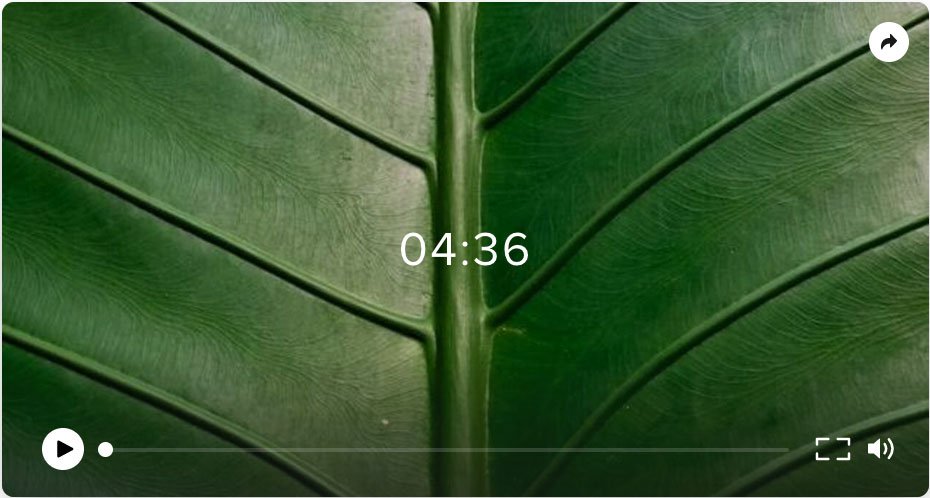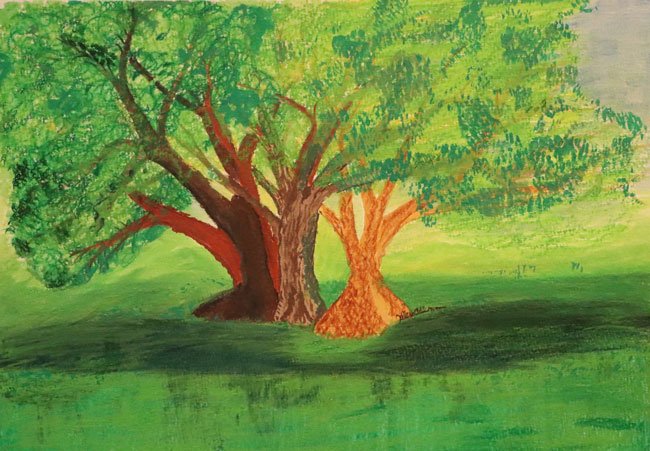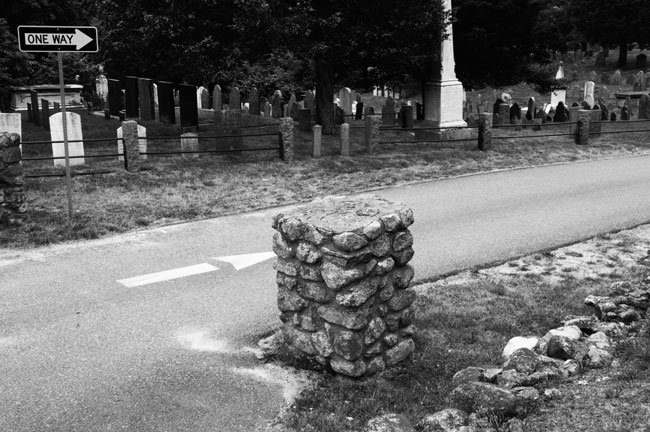Your Custom Text Here
Imbolc-Tide
The next three days, starting today, are very sacred ones in many traditions. In the Northern Hemisphere, they celebrate the first stirrings of spring, the stirrings that we in Maine find hard to appreciate quite yet. Now is the time to notice. It is undeniable that the light is growing, and it will continue to grow no matter the temperatures, ice, and snow. Nor can the human-made catastrophes around us stop it.
Today, February 1st, is Imbolc to Pagans, Candlemas to Christians, and is also celebrated as St. Brigit's Day, especially in Ireland. Today is the first day Imbolc is celebrated, but some celebrate Her day on Feb. 2 and others on February 3rd. This year Chinese New Year is celebrated today and the Shinto festival, Setsubun, celebrated the day before the beginning of spring, falls on February 3rd. (It can fall anywhere between February 1st and 4th.) Today is also the deepest day of the Dark Moon, when we can not see her at all, but She, too, will be with us for several more days—until we see the sliver of the New Moon, possibly this Thursday, February 3rd. Look to the west at dusk for her coming.
I believe these High Holy Days deserve to be celebrated not as a day, but as a season—and may once have been. That's why I say, "Happy Imbolc-Tide!" In my observations, I have found that the energy of celestial events and the most sacred days of the year linger longer than a single day. This is good, not only because it makes it easier not to miss celebrating them in our busy modern lives. I also think that's how life works. We cycle round and round again. One phase fades and is replaced by something new. The special holy days help us humans to notice, remember, and move with the Holy, in this sacred, circle dance—everyday.
In the coming days, may we feel and notice stirrings of spring in the air, in the light, with the shifting Moon, and in our Hearts.
Lindy Gifford is an artist, photographer, graphic designer, creative coach, and writer, ordained an interfaith chaplain in 2015 by the Chaplaincy Institute of Maine (ChIME). A life-long Unitarian Universalist, she is rooted in daily interaction with and connection to the Earth and Creation, as well as the Christian and pre-Christian heritage of her ancestors. She is the author of the Doodle-ography Journal. Her spirit-based practice as a creative coach and publishing consultant is Manifest Identity. Lindy lives on and learns from the Damariscotta River, where she and her husband Steve raised two shining daughters.
Under the Crescent Moon
By Sarah Shepley,
Under the Crescent moonyou drew your last breathVenus the evening starnot yet visibleI ride thisgriefraw and unbridledas the love we sharedCrescent Moonand Venus the evening starjoin togetherwaxing toward fullnessa love storytragic and complete.
Under the Crescent Moon, a limited-edition book, is a compilation of artwork and writing by Rev. Sarah Shepley after the loss of her husband in March of 2020. Her twice daily practice of painting and collage in what she calls her “Grief Journals” allowed her to enter a portal of deep understanding and to experience a map of her journey through grief and transformation. Her book is available on her website and 50% of the proceeds go toward her arts ministry project in Ecuador, the Ecuadorian Arts Initiative. sarahshepley.com/under-the-crescent-moon
Sarah is an interfaith minister, artist, and educator. She founded the Ecuadorian Arts Initiative in 2016. The project brings art to children throughout Ecuador in orphanages, after school programs, and schools. For more information visit www.sarahshepley.com
Late to the pass—a tale of almost not writing those cards
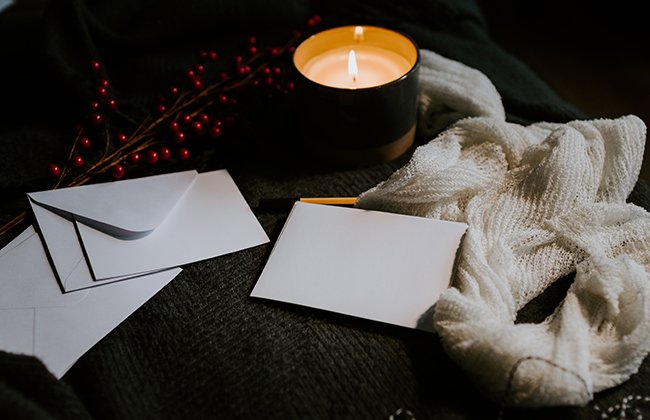
By MC Fletcher,
I don’t know whether it’s the same in the States, but one thing there’s no shortage of in the UK at present is cookery programs. One of the dominant franchises is Masterchef—to the point that there are now three different incarnations of the format! The original Masterchef pits amateur cooks against each other in the now all-too familiar knock-out format, “And the chef leaving us is… (doom-laden pause).” Celebrity Masterchef puts celebrities through the same process (with the one difference that some of them appear barely able to boil an egg at the beginning), and Masterchef—the Professionals sees actual I-do-this-for-a-living folk going head-to-head in a swirling kaleidoscope of veloutes, purees, foams, and tuiles.
What all of them have in common (or had, until COVID made everything so much harder) is that at some point you see each chef working in a real live restaurant, placing their dishes on the pass and shouting “service please.” Their work done, they stand back and watch their creations go out to the waiting diners. And at some point, there is always someone who is late to the pass. Disaster. Diners waiting five minutes for their food.
This year, as usual, I was late to the pass. Not with my sous-vide confit of organic corn-fed guinea fowl, garnished with hay, smoke, and an oyster broth, but with writing my Christmas cards. I was reluctant to even begin. After all, it’s our second COVID Christmas. The UK is waiting to see what Omicron will do. Headlines blare imminent disaster. Will the boosters save us? How many might die in January? What about the economy? And just what did happen at those Christmas parties in Downing Street? And meanwhile wildfires blaze, again, in Australia, and extreme weather wreaks havoc in the USA… and please, don’t even mention Afghanistan…
With all that going on, it was a real struggle to get going. What would my friends and family think, especially those who are mourning the deaths of loved ones or struggling with their mental health, when a cheery “Merry Christmas and a Happy New Year” landed on their doorstep? But equally, did they want “Oh woe is us, the end is surely nigh?” Perhaps better to say nothing at all.
And so the address book stayed in the drawer, and the cards remained resolutely unwritten.
Until I realized it was all right. I could do this.
I could send cards that contained cheerful greetings and wishes that my family and friends WOULD have a merry Christmas and a happy new year. That’s what I wanted for them, after all. And on the same cards I could add messages that acknowledged, and offered to share the weight of, their very real grief and pain.
My Christian faith teaches me that that the Creator sent redemption into the world in the form of a human baby, and that through that act, healing, wholeness and joy—yes, JOY—are available for all, however dark the world around us may seem. And so last week I finally sent my cards out—tiny glimmers of light, I hope, in a dark year.
And by means of this Reflectionary I get a bonus—that of wishing every single one of you reading this a Merry Christmas, and a Happy New Year.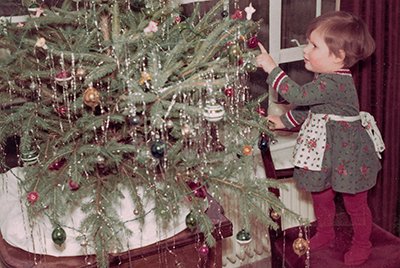 MC Fletcher (she/her) is Lindy Gifford’s cousin. She identifies as a Christian, and lives with a grumpy but beautiful cat in the glorious Cotswolds. (Lindy Gifford is the editor of Reflectionary.)
MC Fletcher (she/her) is Lindy Gifford’s cousin. She identifies as a Christian, and lives with a grumpy but beautiful cat in the glorious Cotswolds. (Lindy Gifford is the editor of Reflectionary.)
Winter Solstice 2021: The Yule Mirror
By Nikki Starcat Shields,
As much as this time of year is all about gathering with family and friends, exchanging gifts, and celebrating light in the darkness, it’s also about going inward. This is the darkest time of the year. The days are short and the nights are long. You can feel it in your soul. There’s a yearning to cease moving, if only for an afternoon.
For the ancient Celts, the time between Samhain and the Winter Solstice was seen as a sort of void time. The old year has ended, but the new one won’t officially begin until the Winter Solstice. It’s the time to hunker down. Time to pause.
I suspect that most of us—mammals, after all—feel that inward pull to hibernate and rest. But in our fast-paced, modern society, not many of us heed that call. Collectively, we tend to keep going full steam ahead unless we’re stopped by an accident, illness, or other complication.
What if you took some time, instead, to be proactive about your instinctive desire to pause? I call this the Yule Mirror. It’s an opportunity to rest. As you rest, you might find yourself wishing to reflect on this year’s journey through the seasons. Taking time to reflect allows you to see what’s working well in your life, what’s not, and how you wish to move forward once again when the light returns.
Give yourself the gift of reflection during the waning days of the year. It might not happen until after your festive gatherings are done. Many of us have time off between Christmas and New Year’s Day. Claim some of that time just for you.
Begin by bringing to mind your most significant events, feelings, and moments of this year. I’m a longtime journal keeper, so in December I read back what I’ve written throughout the year. If you don’t keep a written record, there are other ways to gain clues. Look at your Google calendar or scroll back through the photos you took. Ask a loved one to help you remember.
As you reflect on the year, give yourself time to daydream. What would you like to be different? What events or feelings would you love to encourage? What do you most want to do, be, and have in the new calendar year?
If nothing comes to mind, or the process seems overwhelming, rest some more. Follow your instincts. Wait for the inspiration to arrive. This isn’t something to force. Remember, we’re still in pause mode.
When you look into the Yule Mirror, you can observe how time is more of a spiral than a line or even a circle. Align yourself to Mother Nature’s cycles.
Before you know it, the light of the sun will be waxing once again, and you’ll slowly gather momentum as it increases. Now is the time to daydream of the experiences you wish for around the next loop of the spiral. Hibernate now, like the other fauna and flora. See what unfolds.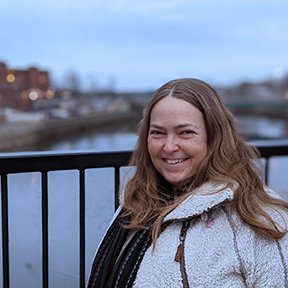 Nikki Starcat Shields is an author, writing coach, and leader of transformational writing retreats. She's also a licensed Pagan priestess. Nikki teaches people to be Thriving Artists, writing their heartfelt books while also nurturing themselves and their creative lives. She lives in Hollis, Maine and adores reading, cats, and spending time by the ocean. She can be found at nikkistarcatshields.com.
Nikki Starcat Shields is an author, writing coach, and leader of transformational writing retreats. She's also a licensed Pagan priestess. Nikki teaches people to be Thriving Artists, writing their heartfelt books while also nurturing themselves and their creative lives. She lives in Hollis, Maine and adores reading, cats, and spending time by the ocean. She can be found at nikkistarcatshields.com.
Things Unknown, but Longed for Still
By Rev. Jane Field,
The caged bird singswith a fearful trillof things unknownbut longed for stilland his tune is heardon the distant hillfor the caged birdsings of freedom."—from Caged Bird by Maya Angelou
It’s a strange question to ask, as all around us Christmas lights twinkle, carols ring out, candles shine, but: how, during Advent, are we like the caged bird in Maya Angelou’s poem? What are the things unknown to us but longed for still, in the midst of the COVID-19 pandemic, the violence of systemic racism, the deep divisions rending our country apart, an ecological emergency threatening creation? In other words, what do we hope for and why? What does it look like to live as those who dream? Who hope, even as we sow in tears?
One of the four themes of Advent is Hope. But is hoping an act of faith? Or is it just wishful thinking? I believe that what transforms hoping and dreaming into more than just wishful thinking is the way we answer the call to discipleship. As people of faith, we aren’t meant to just sit around with our heads in the clouds, dreaming, hoping, wishing, for a better world. We are meant to live every day in ways that bring God’s kingdom to earth as it is in heaven—by loving our neighbors as ourselves, by loving even our enemies, by feeding the hungry, welcoming the stranger, visiting the lonely and imprisoned, caring for the sick, by doing justice, loving kindness and walking humbly with God. Do that, and you transform dreams and hope into reality.
This is easier said than done, in part because of the complicated relationship between hope and lament. If you had nothing to lament—if all was right with your world—you wouldn’t need hope. Or, if you didn’t believe things could or should be different or better, if you didn’t believe that God intended for things to be different, better, you wouldn’t dream or hope—you’d just resign yourself to the status quo. So, confronting the reality of suffering, despair, injustice—all that is wrong with our world—leads us both to lament and to hope. The two feelings go hand in hand—despite the common misunderstanding that hopeful people are Pollyannas who live in la-la land wearing rose-colored glasses that make everything look like a Hallmark card, dripping with bunnies and rainbows and unicorns. Actually, nothing could be further from the truth. And that is why, even in the midst of deep lament, we light the Advent candles—as a symbol of hope.
What dream or hope is alive in you during Advent this year, this year when we have all sown in tears, and sung of things unknown but longed for still?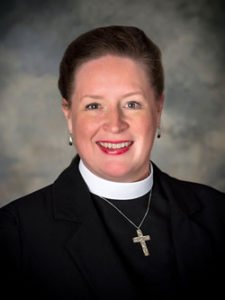 Rev. Jane Field is the Executive Director of the Maine Council of Churches, a partnership of seven mainline Protestant denominations whose mission is inspiring churches and people of faith to unite in building a culture of justice, compassion and peace. An ordained Minister of the Word and Sacrament in the Presbyterian Church (USA), and graduate of Union Theological Seminary (MDiv), Princeton University (MPA, School of Public and International Affairs), and Kalamazoo College, (BA), Rev. Field lives in Portland with her daughter and their Goldendoodles Murray Puppins and Henry. www.mainecouncilofchurches.org
Rev. Jane Field is the Executive Director of the Maine Council of Churches, a partnership of seven mainline Protestant denominations whose mission is inspiring churches and people of faith to unite in building a culture of justice, compassion and peace. An ordained Minister of the Word and Sacrament in the Presbyterian Church (USA), and graduate of Union Theological Seminary (MDiv), Princeton University (MPA, School of Public and International Affairs), and Kalamazoo College, (BA), Rev. Field lives in Portland with her daughter and their Goldendoodles Murray Puppins and Henry. www.mainecouncilofchurches.org
Mercy
By CK Sobey,
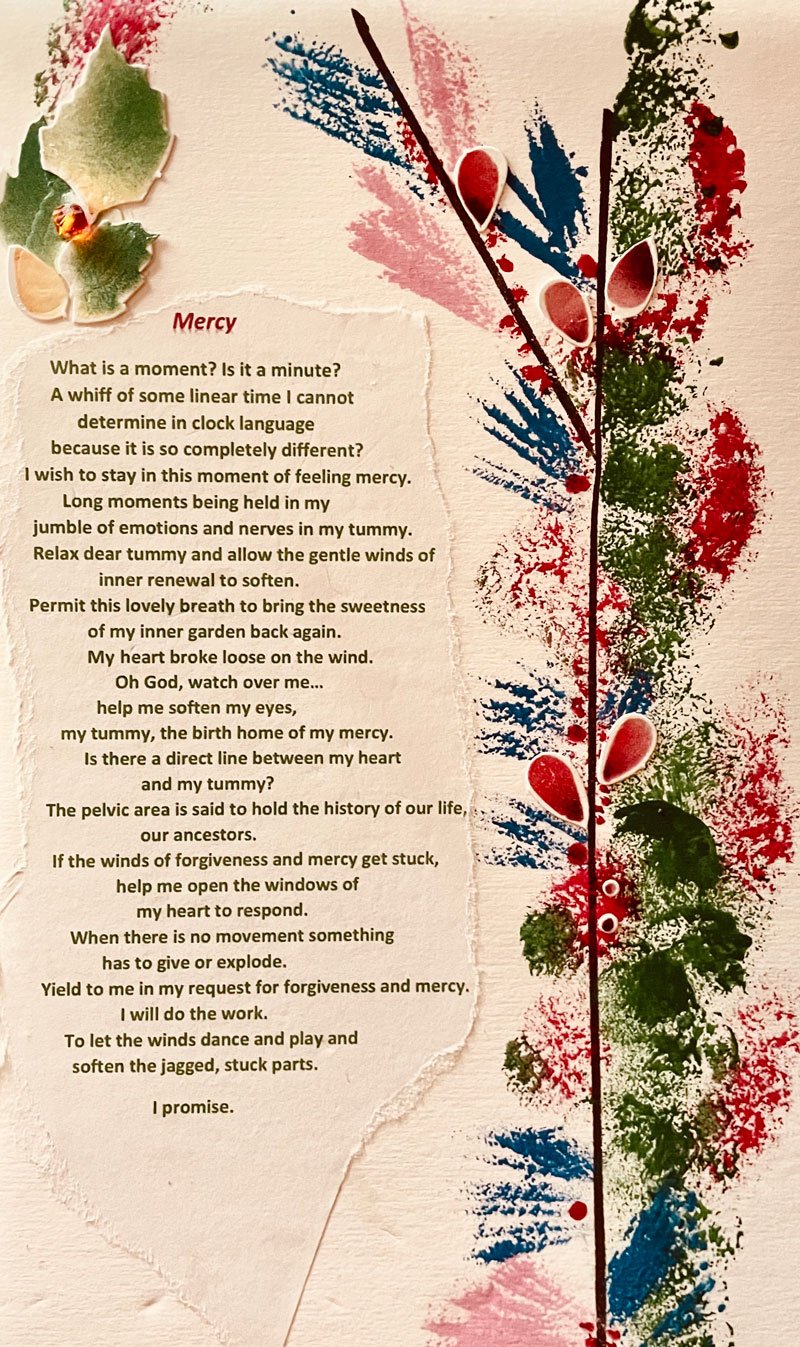
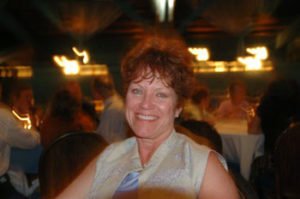 CK (Kas) Sobey continues to live a life of curiosity. She considers herself to be seeker. An explorer.Her many ventures in life attest to this. In her earlier years she was in the entertainment field.She has been a trained mediator. She was in the corporate world for almost 30 years.She trained as a Spiritual practitioner, and later became a certified hypnotherapist bringing a deeper understanding of the inner mind.She has facilitated many groups in a variety of subjects and collage art for years.
CK (Kas) Sobey continues to live a life of curiosity. She considers herself to be seeker. An explorer.Her many ventures in life attest to this. In her earlier years she was in the entertainment field.She has been a trained mediator. She was in the corporate world for almost 30 years.She trained as a Spiritual practitioner, and later became a certified hypnotherapist bringing a deeper understanding of the inner mind.She has facilitated many groups in a variety of subjects and collage art for years.
Kas has since “retired” from her businesses to spend more time reimagining her life.Writing has become an important creative channel.She enjoys cooking, walking, dancing, photography, and exploring the planet and new ideas.Bubble baths and a mixture of music is her way of unwinding at the end of a day.For the past 20 years, Kas has lived in the Valley Forge area of Pennsylvania.She is seeking that which is calling her to new paths.She is presently working on a new book of tiny tales while continuing to doodle.For more information about CK Sobey kassiasobey.com
Learn about Kas's book, Musings, Woolgathering, & Ghosts.
Samhain
By Lisa Steele-Maley,
The autumn season has felt slow and luxurious this year. In Maine, the days have been blessed with summer’s lingering warmth even as the days grow shorter and the nights colder. The extended garden season has meant that we were still eating cherry tomatoes and strawberries through last week. It is an oddity to taste the sunlight stored in the tender red flesh as other plants are going to seed and the leaves on the surrounding trees are turning red, gold, brown, and yellow. But as I let the sweet berry mush linger in my mouth, I recognize the goodness of Creation and know that it is an invitation to remember that I too belong to this cycling.
The protracted late summer/early fall weather has also meant that I have continued to put out generative energy. This urge to be productive is not just in the garden; As a mother, a wife, a daughter, and an administrator, I readily respond to the urge to produce, to contribute, to throw my arms open wide to harness all the love available to me and offer it back to the world. This is, after all, what I am here for.
Yet the longer nights and shorter days are telling me it is also time to slow the pace, to send some energy to the roots, and let the seeds that have been scattered this season burrow into the soil. My soul is yearning for the nesting, the grounding, that autumn invites. It is time to turn inward and tend the inner knowing that quietly sustains and informs through every season. I am tired and ready for the rest of long, cold winter nights. It is coming.
This week we observe Samhain, the mid-point between the Autumnal Equinox and the Winter Solstice. With each day, we are moving ever closer to the longest night of the year. The veil between the worlds is thin and life and death engage vividly in their slow, loving dance.
At sunrise, I will light a candle to celebrate the season of abundance and take stock in the gifts of the light. I will offer gratitude to the earth that sustains me and the plants and animals that share my home-space and nourish my body.
At sunset, I will light the candle again to welcome the arriving darkness and will again extend my gratitude. This time my prayers of thanksgiving are for the ancestors who came before me, the teachers who have guided me, and the Mystery that unites us all.
The gifts of all that was and all that will be mingle in All That Is. I see it in the garden and the forest. I feel it in my body. I know it in my heart. And again, I sigh and give thanks.
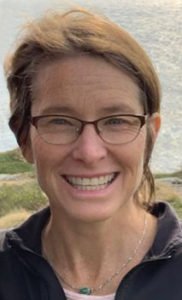 In her actions and her words, Lisa Steele-Maley weaves together her roles as mother, daughter, wife, writer, and educator. Ordained by the Chaplaincy Institute of Maine (ChIME) in 2019, Lisa nurtures the fierce and tender connections between self, spirit, land, and community. Her writing reflects a strong connection to the affirming rhythms of the natural world and keen attention to the details of daily living and relationships.
In her actions and her words, Lisa Steele-Maley weaves together her roles as mother, daughter, wife, writer, and educator. Ordained by the Chaplaincy Institute of Maine (ChIME) in 2019, Lisa nurtures the fierce and tender connections between self, spirit, land, and community. Her writing reflects a strong connection to the affirming rhythms of the natural world and keen attention to the details of daily living and relationships.
Lisa lives in an aging farmhouse on the coast of Maine with her husband, two teenage sons, and a handful of animals. Her newest book, Arriving Here: Reflections from the Heart and Trail, was published in December 2020. Learn more at lisa.steelemaley.io.
Green pumpkin photo by Lindy Gifford.
Morning Blessing Gift Of Change
By Jacob Watson,
Morning Blessing Gifts awaken, stimulate and deepen meditation and spiritual practice. In the tradition of Robert Frost and Wendell Berry, poetic images and personal experiences of New England nature, the birds, animals, woods, and beaches of coastal Maine, awakens listeners to begin their day nurtured and encouraged to be themselves, joined with like-minded souls. This meditation provides a friendly, comforting and accessible way to wake up and affirm the whole self. Each blessing has seven brief paragraphs that offer a welcome to the day, a silent meditation, affirmations of body, heart and soul, a blessing and a gift for each day. Begins and ends with a ring of a singing bowl.
Click to listen to the InsightTimer meditation: Morning Blessing Gift of Change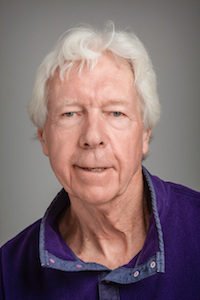 Rev. Jacob Watson, D.Min. is the author of We’re Gainin’: Collins Brook, A Maine Free School—A Memoir, which he wrote to celebrate the 50th anniversary of the school’s founding in 1969. Jacob founded Collins Brook School and the Chaplaincy Institute of Maine. He is teaching a pilot interfaith chaplaincy program to students in Brazil and Guatemala. His Morning Blessing Gift meditations and Mini-Satsangs are available as audio recordings on the free meditation app Insight Timer. He may be reached through his website revjacobwatson.com.
Rev. Jacob Watson, D.Min. is the author of We’re Gainin’: Collins Brook, A Maine Free School—A Memoir, which he wrote to celebrate the 50th anniversary of the school’s founding in 1969. Jacob founded Collins Brook School and the Chaplaincy Institute of Maine. He is teaching a pilot interfaith chaplaincy program to students in Brazil and Guatemala. His Morning Blessing Gift meditations and Mini-Satsangs are available as audio recordings on the free meditation app Insight Timer. He may be reached through his website revjacobwatson.com.
So Much Better than Nothing
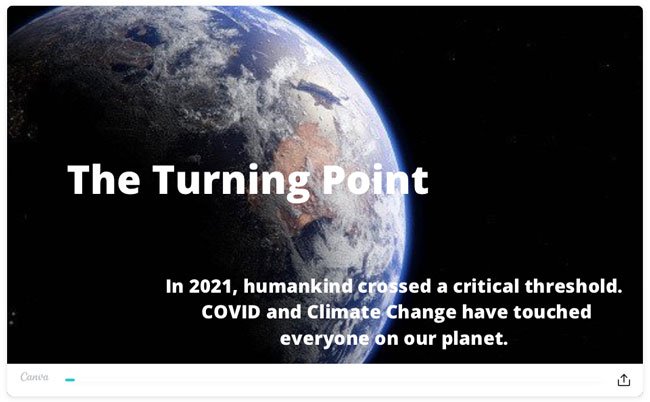
By Lindy Gifford,
It was 2018. We came together in Toronto. The four of us. The 8,300 of us. For the Parliament of World Religions.
I traveled from Maine, my two sisters traveled from Washington, DC and Vermont, my cousin traveled from England. Half of the fun was all four of us being together in an Airbnb in an amazing city. The other half was pealing off to different workshops and plenaries. One sister and I climbed aboard a bus and toured three different places of worship in the city. My cousin, a practicing Anglican, explored her Jewish roots. My other sister especially loved the Red Tent, where women (and a few men) danced, sang, wrote, spoke, and made art between the crimson folds of fabric. I went to every session at which I could listen to the words of Native women. We came back together every day for Langar, and a bountiful vegetarian lunch, generously provided by the Sikh community.
That was then. Starting this Saturday, October 16, the Parliament meets again—this time virtually. This is now.
When we heard that the next Parliament would be virtual my sisters and cousin and I were all disappointed. If we can’t meet in person then what’s the point? Wait a minute. The four of us have been coming together online every other week for over a year now. We laugh and sulk. We wish we could travel to be together again, but these virtual circles are so much better than nothing. It occurred to me that they are the virtual replacement for our family gathering in Toronto. So why can’t the virtual Parliament replace the other half of that amazing week?
So, I signed up for the virtual Parliament. How amazing will that be, to listen to the likes of the Dalai Lama, Dr. Jane Goodall, Rev. William Barber… in my own living room. And to “go to” workshops and breakout sessions on Buddhism, Black Liberation, and Racial Justice; a New Paradigm of Life; Blooming out of the Rough… offered by presenters and panels from all over the world and every faith tradition.
The image this Reflectionary starts with is from the 2021 Parliament Convening Visual Statement. This is now. Post turning point.
The statement goes on:
Our common lived experience will never be as it was before.
The consequences of Climate Change and COVID — like most of the crises in the Anthropocene—fall most heavily on those least responsible for what has happened.
This is the reality of the Anthropocene. We have become a force of geological proportions.
But something else is changing in 2021—we are."
That’s the point. That’s what the workshops and plenary sessions of the Parliament are about now. Ways we can change to meet the enormous challenges that face us. And that is so much better than nothing.
At this writing, the Visual Statement is still a work in progress and the Parliament has asked that we participate in its formation. To access the interactive Visual Statement.
To register for the Parliament.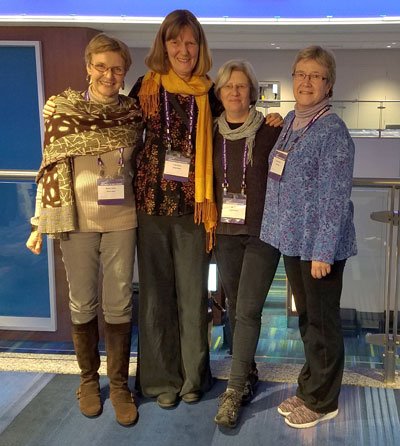
Lindy Gifford (the tall one) is an artist, photographer, graphic designer, creative coach, and writer, ordained an interfaith chaplain in 2015 by the Chaplaincy Institute of Maine (ChIME). A life-long Unitarian Universalist, she is rooted in daily interaction with and connection to the Earth and Creation, as well as the Christian and pre-Christian heritage of her ancestors. She is the author of the Doodle-ography Journal. Her spirit-based practice as a creative coach and publishing consultant is Manifest Identity. Lindy lives on and learns from the Damariscotta River where she and her husband Steve raised two shining daughters.
Posted Private Property
by Aram Mitchell,
The river walk near my home is one of those places that weaves an experience of familiarity into the unknown of each day.
A few weeks ago, I went down to the ribbon of forested trail on the river’s bank expecting to encounter the elements in the way I do most days. But my romance was disrupted. Every twenty paces along the southern side of the trail “Posted Private Property” had been hastily stapled to the trunks of trees.
I know that someone has legal claim to the land around the trail. That information was not a surprise. Still, this manner of posting threw me off. Something about the volume of signage. Something about the sloppy way the signs were fastened to the trees. I hate that someone has made the trees complicit in their obnoxious, repetitive assertion of ownership.
The trail is still open for walking. That ribbon of earth is still ostensibly a public space, but every twenty steps it feels like someone is screaming with a bright yellow sign: THIS PLACE DOES NOT BELONG TO YOU.
I want to look them hard in the eye and retort: I was never under the illusion that it does.
I am not here to claim ownership. I am here for communion. I am here for the spiritual practice of sauntering through the forest. I am here for the ritual act of refusing the values that hurry our world along.
Places change. That is their nature. Our relationship with places adjust at seasonal rates throughout a year, and in significant ways over a course of a lifetime. This is natural. But there are some changes that do not feel natural.
Some changes, like the addition of bright yellow signs posted along a familiar river trail, are not that big of a deal. While some changes are existential, like changes to the weather that governs the world and changes to the common air we breath.
Repetitive boasts of ownership. Too much burnt carbon. The agents of noxious and obnoxious change generate a heat and an ire in me that requires movement to dissipate. I metabolize my grief and my anger by going for another walk. Solvitur ambulando.
Now, as I walk—with the freely flowing river on one shoulder and the recently harnessed forest on my other shoulder—I let open ended questions tumble around in my heart.
How do I navigate the world’s many changes with grace and conviction? And how do I decide which changes to resist, even when I do not have the power to prevent them?
How do I lean into the most mundane acts, like walking and like drawing breath, when those acts are each tangled up with threads of heartache?
Can I grieve and commune, celebrate and adjust, all in the stretch of a single mile? Do I have the capacity to hold a full spectrum of experiences and emotional responses all at the same time? Is that what it means to be human?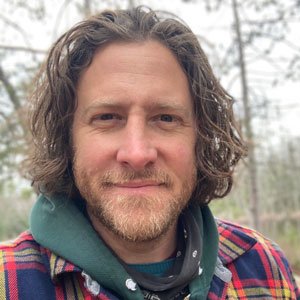 Aram Mitchell (he/him) is a Registered Maine Guide and Wilderness First Responder with a Master of Arts degree in Religious Studies from Chicago Theological Seminary. Aram lives on a little plot of land in Maine with his spouse, two dogs, a cat, and several chickens. He moved to Maine in 2015 to serve as the Executive Director of Renewal in the Wilderness, where he worked for five years planning and facilitating programs designed to help sustain the vocations of care providers, justice workers, and faith leaders. In 2021 Aram began working as the Director of Partnerships and Formation at The BTS Center, a private foundation in Portland, Maine that aims to catalyze spiritual imagination with enduring wisdom for transformative faith leadership. www.arammitchell.com
Aram Mitchell (he/him) is a Registered Maine Guide and Wilderness First Responder with a Master of Arts degree in Religious Studies from Chicago Theological Seminary. Aram lives on a little plot of land in Maine with his spouse, two dogs, a cat, and several chickens. He moved to Maine in 2015 to serve as the Executive Director of Renewal in the Wilderness, where he worked for five years planning and facilitating programs designed to help sustain the vocations of care providers, justice workers, and faith leaders. In 2021 Aram began working as the Director of Partnerships and Formation at The BTS Center, a private foundation in Portland, Maine that aims to catalyze spiritual imagination with enduring wisdom for transformative faith leadership. www.arammitchell.com
River photograph by Aram Mitchell
Pumpkins and Zucchini
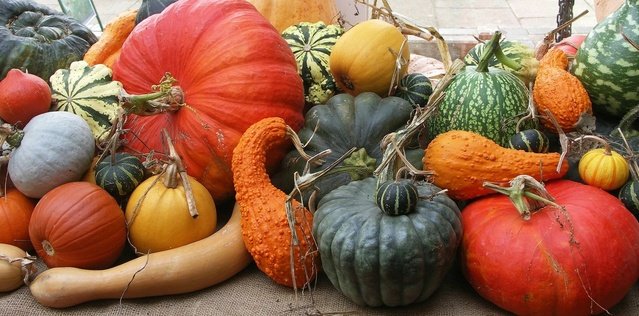
Nikki Starcat Shield,
The Autumnal Equinox arrives with fanfare here in the northeast. The farm stands and farmer’s markets overflow with vegetables and fruits. Piles of orange pumpkins catch the eye. Crisp apples delight the taste buds.
Fall foliage is just beginning to emerge, as the cooler nights and sunny days alert the trees that it’s nearly time for their long rest.
I think of the “back to school” vibe of fall—which I still feel every year, even though I haven’t been in school for decades—as the modern equivalent of harvest mode. Most of us aren’t farmers, and don’t rely on what we grow ourselves in order to be fed for the winter. Yet there is still that fall impulse to organize, get active, and clear our spaces.
The harvest, for most of us, is mainly metaphorical. But Paganism is, at its heart, a pastoral religion. In other words, our holidays are organized in accordance with the agricultural calendar. So let’s use that connection to the bountiful earth to enrich our lives, just as our ancestors did to survive and, we hope, thrive.
First, there’s the community aspect of farming. Even in rural areas, not every farm raised every crop. There was plenty of trade. Farmer Jane had lots of pumpkins, while Farmer Joe’s chickens were prolific. Pumpkins (or pies) for eggs seems like a perfect deal. How does this sharing of resources show up for you, in your communities of choice? Do you barter? Do you hire someone for services that you can’t or don’t wish to do on your own?
Next, let’s look at gratitude. In the U.S. the practice of sharing our thanks is associated with Thanksgiving. But all harvest festivals come with a huge dose of gratitude. What are the bountiful harvests in your life right now, in the autumn of the year? Our modern way of life has trained most of us to focus on what’s missing, what’s wrong, what we’re lacking. Flip that notion on its head, even if only for a moment. What are your biggest blessings?
Finally, harvest season is a time of plenty. Sure, veggies were being canned, dried, and preserved in various ways. But often this was also a time of feasting, holding barn dances, and sharing the bounty. Which areas of your life are overflowing with abundance? How can you share them?
If money is flowing for you, will you give to causes you care about or those less fortunate? If you’re blessed with lots of love and friendship, can you share it by welcoming someone lonely to your table? Maybe, like me, you have a lot of books, and will pass some of them along to others to read over the colder months to come. Think of ways to share your own harvest with your community.
Remember that in order to give, there must also be a recipient. Be open to receiving the bounty that others offer to you. Yes, even that basket of zucchini.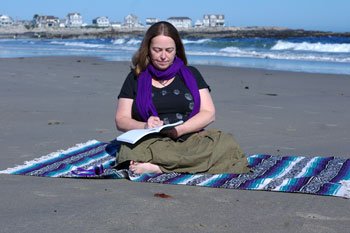 Nikki Starcat Shields is an author, writing coach, and leader of transformational writing retreats. She’s also a licensed Pagan priestess. Nikki teaches people to be Thriving Artists, writing their heartfelt books while also nurturing themselves and their creative lives. She lives in Hollis, Maine and adores reading, cats, and spending time by the ocean. She can be found at http://www.nikkistarcatshields.com.
Nikki Starcat Shields is an author, writing coach, and leader of transformational writing retreats. She’s also a licensed Pagan priestess. Nikki teaches people to be Thriving Artists, writing their heartfelt books while also nurturing themselves and their creative lives. She lives in Hollis, Maine and adores reading, cats, and spending time by the ocean. She can be found at http://www.nikkistarcatshields.com.
Pumpkin & gourd photo by Rob Fallows.
Yom Kippur—The Day of Atonement
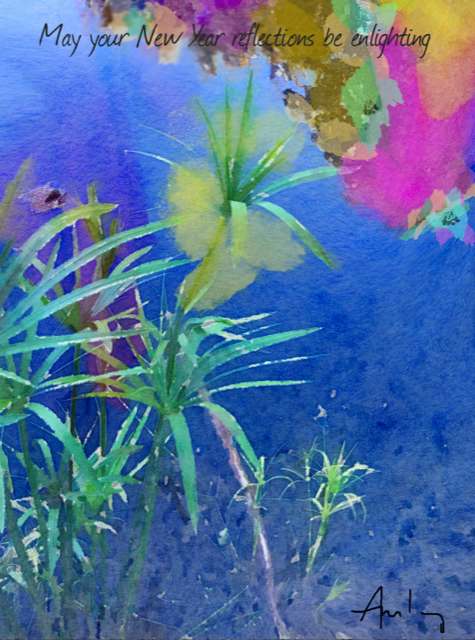
By Joyce Zonana,
It’s the holiest day of the Jewish year, the day on which one’s fate for the year to come is sealed. Observant Jews around the world fast for 24 hours on Yom Kippur and often spend the entire day in synagogue, praying and seeking to atone for misdeeds and to be cleansed and purified. It is a day of introspection, as we seek to deepen our relationship with the Divine—or with our highest, truest Self.
Although I am not a formally observant Jew, I can never escape the pull of Yom Kippur, a day that always marks for me a break from the ordinary, a retreat into a realm of purity and peace. Sometimes called the “sabbath of sabbaths,” it is a day when we suspend our engagement with the world in order to more fully experience our connection with the Divine.
Rosh Hashanah (The Jewish New Year) and Yom Kippur occur in the Hebrew month of Tishrei, which usually corresponds to September in the Gregorian calendar. When I was growing up in Brooklyn, the ten “Days of Awe” between Rosh Hashanah and Yom Kippur always seemed to be sunlit, crystal-clear days, when the ocean and the river sparkled and our lives felt refreshed as we began the new school year. Wearing new outfits, my best friend Deborah Saltz and I would spend Yom Kippur walking through Brooklyn, then return to our homes for a festive “break-fast” meal with our families. While our fathers (and my brother) spent the day indoors in synagogue, we were free to enjoy the fresh air and magical light reflecting off the water. To this day, that is Yom Kippur for me—a time of magic and communion, friendship and sunlight, discovery and freedom.
This year, I will be at a yoga retreat during Yom Kippur. I will fast to mark the day as I seek to renew my commitment to goodness in my daily life and thoughts, grateful for the circle/cycle of the year, for the ever-present opportunity to return and return again.
From the Yom Kippur Morning Prayer:
Return again, return again,return to the land of your soul.
Return to who you are.Return to what you are.Return to where you are bornand reborn.
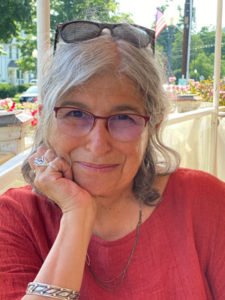 Joyce Zonana, a regular contributor to the online journal Feminism and Religion, is a writer and literary translator. Her most recent translation is Tobie Nathan’s novel, A Land Like You, a celebration of Jewish life in Egypt in the first half of the twentieth century. She is also the author of a memoir, Dream Homes: From Cairo to Katrina, an Exile’s Journey.
Joyce Zonana, a regular contributor to the online journal Feminism and Religion, is a writer and literary translator. Her most recent translation is Tobie Nathan’s novel, A Land Like You, a celebration of Jewish life in Egypt in the first half of the twentieth century. She is also the author of a memoir, Dream Homes: From Cairo to Katrina, an Exile’s Journey.
“New Year Reflections” art used by permission of the artist, Deborah Saltz Amerling.
Tara: “She Who Hears the Cries of The World”
By Khenmo Konchog Nyima Drolma,
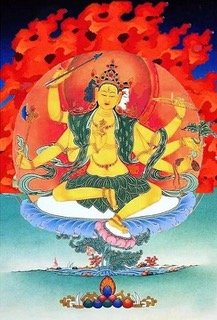 “She Who Hears the Cries of The World” in Tibetan Buddhism is Tara. Beloved, Tara is an outward expression of the female wisdom principle in the activity of compassion, freeing us from fear. She can be depicted as peaceful or wrathful; just as a mother may need to appear angry in a crisis to call her children to immediate attention. There are two Taras for times of epidemics, revived for today’s COVID. Tara, clothed in leaves and carrying medicinal herbs is in her peaceful form, one of the 21 emanations of Green Tara, called Loma Jonma and Parnashavari in her wrathful appearance.
“She Who Hears the Cries of The World” in Tibetan Buddhism is Tara. Beloved, Tara is an outward expression of the female wisdom principle in the activity of compassion, freeing us from fear. She can be depicted as peaceful or wrathful; just as a mother may need to appear angry in a crisis to call her children to immediate attention. There are two Taras for times of epidemics, revived for today’s COVID. Tara, clothed in leaves and carrying medicinal herbs is in her peaceful form, one of the 21 emanations of Green Tara, called Loma Jonma and Parnashavari in her wrathful appearance.
In the 1190’s when leprosy was rampant in Tibet, alone in a cave Lord Jigten Sumgon was dying. His thoughts turned with a profound compassion to all the suffering in the world, and Tara appeared in a vision. With this enlightenment, his strength returned and he founded our Drikung Kagyu lineage. Healing is understood as a mind of bodhicitta (an untranslatable word connoting a depth of compassion and lovingkindness that is boundless and nondiscriminatory like the sun’s rays) and is sometimes accompanied with physical health, other times such as with White Tara, the mind of Bodhicitta alone is wholeness. His legacy includes a simple tender Tara practice for times of epidemics.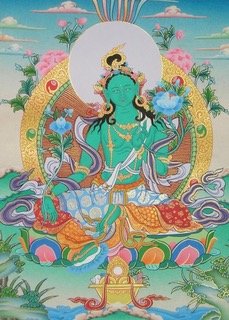 This peaceful Tara prayer has four stages. First, we give rise to the mind of bodhicitta. We begin with our limited capacity and continue throughout our life to develop bodhicitta. Then we imagine ourselves as Tara or any personal Deity figure. Tibetan Buddhism works with thousands of such images so that each of us can find a path to transmute the unique combination of emotions and patterns of thinking that confine us, obscuring our inner seed of perfection. We understand that Tara’s wisdom is our innate nature, obscured by our own ignorance. At the same time, we are on the path to becoming her, the fruition of our potential- a fearless, limitlessly loving heart/mind. Imagining ourselves as unlimited love and compassion allows us to explore what a relaxed responsive, open heart feels like, setting into motion new mental patterns.
This peaceful Tara prayer has four stages. First, we give rise to the mind of bodhicitta. We begin with our limited capacity and continue throughout our life to develop bodhicitta. Then we imagine ourselves as Tara or any personal Deity figure. Tibetan Buddhism works with thousands of such images so that each of us can find a path to transmute the unique combination of emotions and patterns of thinking that confine us, obscuring our inner seed of perfection. We understand that Tara’s wisdom is our innate nature, obscured by our own ignorance. At the same time, we are on the path to becoming her, the fruition of our potential- a fearless, limitlessly loving heart/mind. Imagining ourselves as unlimited love and compassion allows us to explore what a relaxed responsive, open heart feels like, setting into motion new mental patterns.
We envision bodhicitta, as green light, filling our whole body. This light eventually overflows to our palace(home), neighborhood and to wherever we hear the cries of suffering. Our helplessness is replaced with connection.
Remarkably for the prayer concludes with Tara becoming a protective face mask—we visualize her from in front of each nostril. Through Tara we meet the world fearlessly with compassion. We too can hear the cries of the world and respond with active compassion.
Vajra Dakini invites you to their Virtual Sangha: weekly meditation and Dharma talks, retreats and special events. Tara is part of our morning meditation Tues & Thurs 7am. vajradakininunnery.org
Link to the Tara Prayer
Upcoming Teaching with Khenmo on the Tara Practice Sept 15th 7- 9 PM hosted by Dharma Refuge dharmarefuge.com/calendarlisting.html Khenmo Konchog Nyima Drolma has studied with the foremost spiritual teachers of our time including H.H. Dalai Lama. After her novice ordination by Drikung Kyabgon in 1997, she received attended multiple international gatherings as he transmitted the lineage and major Drikung teachings. Most recently, she was one of the teachers HH Drikung Chetsang Rinpoche trained personally to teach the new Shravasti curriculum. She received monastic training at Gampo Abbey guided by Ven. Pema Chödrön, and attended their shedra (philosophy college). In 2002 she took full ordination as a Buddhist nun in Taiwan. In 2004 she was installed as a Khenmo (Abbot) in the Drikung lineage, becoming the first woman and first westerner in her lineage to officially hold this responsibility. Her current responsibilities, in addition to Vajra Dakini Nunnery, include the Tibetan/Himalayan Nuns Leadership Program and she chairs the international committee for the Shravasti Bhikshuni Varsa Retreat sponsored by HH Drikung Kyabgon Chetsang Rinpoche.
Khenmo Konchog Nyima Drolma has studied with the foremost spiritual teachers of our time including H.H. Dalai Lama. After her novice ordination by Drikung Kyabgon in 1997, she received attended multiple international gatherings as he transmitted the lineage and major Drikung teachings. Most recently, she was one of the teachers HH Drikung Chetsang Rinpoche trained personally to teach the new Shravasti curriculum. She received monastic training at Gampo Abbey guided by Ven. Pema Chödrön, and attended their shedra (philosophy college). In 2002 she took full ordination as a Buddhist nun in Taiwan. In 2004 she was installed as a Khenmo (Abbot) in the Drikung lineage, becoming the first woman and first westerner in her lineage to officially hold this responsibility. Her current responsibilities, in addition to Vajra Dakini Nunnery, include the Tibetan/Himalayan Nuns Leadership Program and she chairs the international committee for the Shravasti Bhikshuni Varsa Retreat sponsored by HH Drikung Kyabgon Chetsang Rinpoche.
In Search of the Grail

By CK Sobey,
What if the grail really existed?That it held the answers to our questions about God, Spirit, the Universe?All the answers for all the questions asked through the ages?Answers uncomplicated in their fundamental nature.So significant in its simplicity.Why had Percival searched for this treasure for so many years of his life?His noble promise to his king and all he held sacred.It is my belief that we all search for this treasured vessel of truth at different junctures in our lives.That we can be guided in mysterious ways that offer us a chance to awaken.That the treasure may be a breath away.Instead, we learn to obey.To listen to what we are told.If we learn well, our lives become routine in mind and deed.Different rewards to bind us to do even better.Every day marching to the same drummer.Our craving to search for the value of life is a distant memory.But now and then, something shines through.Cracks begin to open and let some light in.We become curious and look deeper.Is there a place within us that holds the treasure we all seek?I believe this.It is a place where our grail waits to be found.
From CK Sobie’s new book, Musings, Woolgathering, & Ghosts. CK (Kas) Sobey continues to live a life of curiosity. She considers herself to be seeker. An explorer.Her many ventures in life attest to this. In her earlier years she was in the entertainment field.She has been a trained mediator. She was in the corporate world for almost 30 years.She trained as a Spiritual practitioner, and later became a certified hypnotherapist bringing a deeper understanding of the inner mind.She has facilitated many groups in a variety of subjects and collage art for years.
CK (Kas) Sobey continues to live a life of curiosity. She considers herself to be seeker. An explorer.Her many ventures in life attest to this. In her earlier years she was in the entertainment field.She has been a trained mediator. She was in the corporate world for almost 30 years.She trained as a Spiritual practitioner, and later became a certified hypnotherapist bringing a deeper understanding of the inner mind.She has facilitated many groups in a variety of subjects and collage art for years.
Kas has since “retired” from her businesses to spend more time reimagining her life.Writing has become an important creative channel.She enjoys cooking, walking, dancing, photography, and exploring the planet and new ideas.Bubble baths and a mixture of music is her way of unwinding at the end of a day.For the past 20 years, Kas has lived in the Valley Forge area of Pennsylvania.She is seeking that which is calling her to new paths.She is presently working on a new book of tiny tales while continuing to doodle.For more information about CK Sobie kassiasobey.com
Musings, Woolgathering, & Ghosts cover photograph by CK Sobey, cover design by Lindy Gifford
The River Speaks
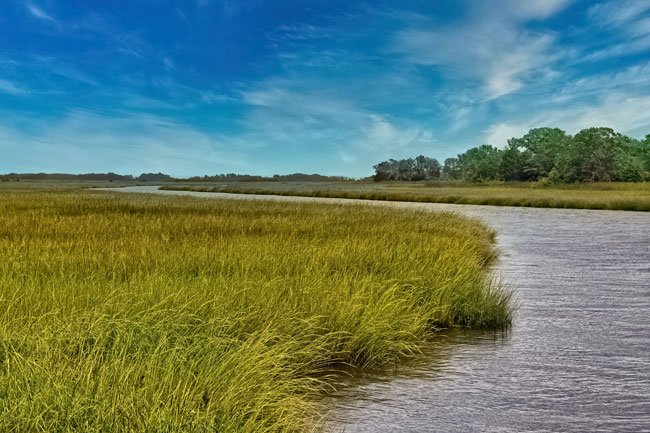
By Helen G. Rousseau,
Without SourceI am nothing.Without the bracing sides of marshor landI would have no boundaries,would not fulfill my destinyof bringing water to the manywho await my abundance.
Without gravity,my dance would morphfrom this waltzI’ve been dancing for generationsto a boogie-woogie-free-for-allwreaking havoc on air and land,changing the outcome for everything.
As much as I am the pouring outand the flow,I am also the vesselholding the richness of silt and sand,the bodies of fish and fowl,and plants that nourish us all.
Though connected to Source,I remain at the mercyof the clouds that feed meand the sun that takes from me.More than anything, though,I am now at the mercyof human neglect and arrogance,having become a dumping groundfor the waste of productivityand so-called development.
Thankfully, I am also at the mercyof those who are awakenedto their connection to me,to the earth and each other,knowing we are all onecoming from the same Source.
The fish are speaking for me.The birds are singing for me.The children of today have eyesthat see what their parents have not,have hearts that envelop the worldand not just their tribe.
It is from them I awaitmy final chance to be restored.It is because of themI still have hope.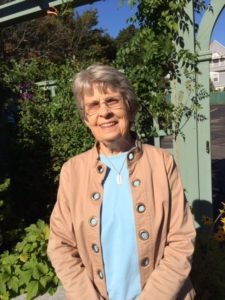 Helen is an ordained Interfaith Minister. She was a Catholic nun for thirty years and spirituality has always been central to her life. At present, she sees her ministry as writing and leading writing groups, which she has done for twelve years.
Helen is an ordained Interfaith Minister. She was a Catholic nun for thirty years and spirituality has always been central to her life. At present, she sees her ministry as writing and leading writing groups, which she has done for twelve years.
Her latest book of poetry is entitled Poems for a World on Fire: Meditations on Hope. Its focus is on all the major issues of our day including global warming, migrations, and COVID-19. These poems give voice to the earth, its peoples, animals, trees, seas, land, and all that makes this planet uniquely our home. Her work is infused with an underpinning of hope and a trust in life. She reads a poem every week on Facebook. To contact Helen or order a book, go to www.helenrousseau.com
River image by Chris Engel
The Hope of Grief
By Rev. Abby Lamb,
The fires that barreled through California’s brittle land during the summer of 2020 caused the skies to blanket us in grey and orange, toxic smoke for days. Humans, animals, plant ecosystems, homes, and livelihoods were snuffed to a noxious ash that our systems were ill-equipped to handle. And by “systems” I mean many things—bodies, psyches, institutions of politics, health, civics, and more—none of which have evolved to filter the healthy fertilizer of ash from the toxic chemicals floating in our airspace.
It felt as though the concurrent COVID-19 pandemic had morphed and multiplied into something more visible, and more dystopian. Like so many, anxiety smothered my chest like a disease—a virus, if you will—contracted from the air that I was trying hard not to breathe. Remarkably, and here’s the heartening part—this is where I discovered the perfectly designed filtering mechanism within: grief.
Yes, that’s the hopeful part. Life is full of cataclysmic events, but we can utilize grief as an internal filter that holds the dual cuts of anxiety and fear in their rightful place—on the sidelines of our decision-making. We can then act from a loving, compassionate place that serves the world so crucially.
My own transformative grief developed out of a realistic, warranted sadness. And I am grateful for that. In exploring this sadness, I stretched my awareness away from a solitary fear toward a collective sorrow. And while the losses were still palpable, the grief, as carried collectively, was the healthy fire that melted to ash the hardness of my conviction that the world was ending, and painfully so. Yes, things fall apart and burn down, but the ash that remains can be a potent fertilizer for re-growth if we approach it together, as a caring and dedicated community.
All of the spiritual leaders that I respect believe that the heat of grief is ultimately nourishing for our spirits. I agree. In knitting sadness and hope, grief teaches us to love more authentically and mourn without bitterness, creating a world where we are protected by more discerning air purifiers—ones that welcome resilience and connection, while repelling despair.
Abby Lamb was ordained by the Chaplaincy Institute of Maine (ChIME) in 2021, where she learned how to practice greater patience, compassion, and authenticity to her calling to be a more present, empathic human being. She cares deeply about bearing witness to all of life’s mysterious complexities. She writes non-fiction stories that speak to the quirky, sometimes funny, sometimes sad, almost-always-poignant events that give meaning to her days and ways. In addition to writing, her interests include photography, collage, end-of-life companionship, and holder of therapeutic space. She is also a sometimes-adept urban and mountain hiker, just don’t ask her how to use a compass. Getting merrily lost just might be her greatest prowess. Her website is Tender Roots at www.tenderlyrooted.wordpress.com
Something for Everyone to Believe
By James A. Weathersby,
I remember a conversation I had while in seminary among several persons of different faiths. Our conversation settled on the Afterlife and what to expect. We agreed, after much laughter and serious postulating, that two versions of the Afterlife held prominence. We thought, “a full Heaven and an Empty Hell” OR “a full Hell and an Empty Heaven.” We laughed because we humans were trying to wrestle with the questions of Divine Judgment and Final Destination. I was arrogant enough when I was a young believer, I thought I knew the mind of God and could say with authority “this person and not that person!” My many years of ministering with people during incarceration, hospitalization, and the verge of Death taught me that I know nothing about Gods’ mindset. How could I boast, yes boast, about whose lifestyle merited Eternal Damnation or Paradise Bliss?
My birthday was several months ago. I consider myself blessed to be an older person. I now trust that everyone has a Spirituality. Spirituality gives hope, comfort, guidance, and meaning to peoples’ lives. There is something for everyone to believe. People believed during the healthcare crises of the COVID Pandemic. People believed during the ongoing Environmental Climate Change. People believed during Black Lives matter, the DC Insurrection, and the maturing of our current presidential administration. People believed during the waning darkness of the previous administration. People are renewing their beliefs in the dawning of a brighter administration for the coming years.
I have been told I am too much of an optimist. My personal beliefs do inform, impact, and influence my writings. I hope so, I think it’s too easy for anyone and everyone to surrender to despair and apathy. Americas’ history is brighter than the momentary chapters of human darkness. I believe what we share with others will ignite a spark in them as well. My prayer is that what we all believe and hope for unites us again as Americans, as people of Faith, and as Humanity. This is something for everyone to believe. The Rev. James A. Weathersby M.Div., BCC was born in Chicago, product of a dedicated single mother and the Public-School system. He is a genetic Baptist and a historic Democrat; spirituality in his veins for generations. His family valued Education and the Black church; there are four generations of ministers in his family, serving as Pastors of congregations and Chaplains in Institutions. His Bachelors of Arts came from Trinity Christian College in Palos Heights, Illinois from the Reformed Churches of America tradition. His Masters of Divinity Degree (specialty in Pastoral Care and Counseling) came from the Southern Baptist Theological Seminary of Louisville Kentucky, from the Southern Baptist tradition. His professional career as a Chaplain includes serving populations in Hospitals, Hospice, both Men’s and Women’s Corrections (Death Row Chaplain) in several Midwestern states. His time in Maine has included Chaplaincy at a Youth Development Center, Pastor to an island congregation and lately, Chaplain (II) of the State Forensic and civil Psychiatric Center. He has been honored to be married for 27 years and enjoy writing, yoga, and reading.
The Rev. James A. Weathersby M.Div., BCC was born in Chicago, product of a dedicated single mother and the Public-School system. He is a genetic Baptist and a historic Democrat; spirituality in his veins for generations. His family valued Education and the Black church; there are four generations of ministers in his family, serving as Pastors of congregations and Chaplains in Institutions. His Bachelors of Arts came from Trinity Christian College in Palos Heights, Illinois from the Reformed Churches of America tradition. His Masters of Divinity Degree (specialty in Pastoral Care and Counseling) came from the Southern Baptist Theological Seminary of Louisville Kentucky, from the Southern Baptist tradition. His professional career as a Chaplain includes serving populations in Hospitals, Hospice, both Men’s and Women’s Corrections (Death Row Chaplain) in several Midwestern states. His time in Maine has included Chaplaincy at a Youth Development Center, Pastor to an island congregation and lately, Chaplain (II) of the State Forensic and civil Psychiatric Center. He has been honored to be married for 27 years and enjoy writing, yoga, and reading.
Opinions or Ideas, painting by Valerie A. Clemons.
Presence
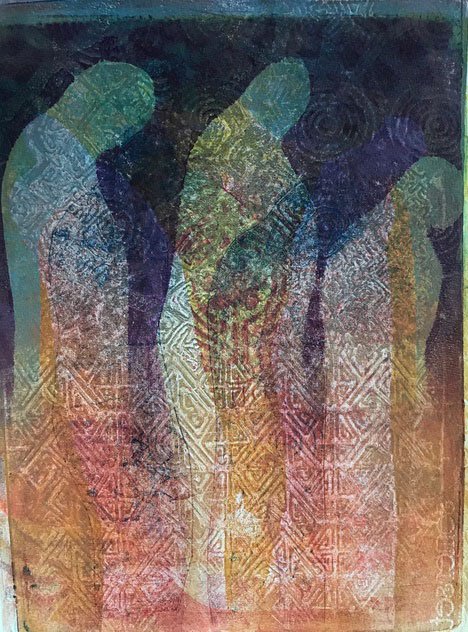
[gallery size="large" columns="2" ids="4177,4178"]
By Sarah Shepley,
These images represent a series inspired by personal loss and transformation. My art is a portal leading me into a space large enough to hold all the unfolding experiences and is also a map for my own personal journey through challenging times.
The ancestors are present here, as well as my future and present self. The images are a mystery that I simply follow and allow to remain in a liminal space reminding me, as John O’Donohue writes, that the road behind me has washed out and the new one has yet to be formed. It is a place of holy uncertainty, and engaging the mystery through the images settles me in to my heart where I know everything is as it is meant to be. I resist the need to understand what the images offer, instead I bow down with palms forward for the wisdom inherent in the process. The act of creating is what leads me to my own source and the images reflect the journey along the way.
Each piece is a monoprint using geli plates, textured materials and handmade stencils. The series is on exhibition through the month of August at Cafe Nomad in Norway, Me. Sarah Shepley is an Interfaith minister, Artist and Educator. She founded the Ecuadorian Arts Initiative in 2016 as an expression of her arts ministry. The project brings art to children throughout Ecuador in orphanages, after school programs and schools. 50% of all sales in this show go directly toward the project. For more information visit www.sarahshepley.com
Sarah Shepley is an Interfaith minister, Artist and Educator. She founded the Ecuadorian Arts Initiative in 2016 as an expression of her arts ministry. The project brings art to children throughout Ecuador in orphanages, after school programs and schools. 50% of all sales in this show go directly toward the project. For more information visit www.sarahshepley.com
Blueberry Hill
[gallery link="none" columns="2" size="full" ids="4168,4169"]
By Lisa Steele-Maley,
On many Sunday mornings, I attend a Quaker meeting. Gathering in the bright, sunny meeting room for an hour of silent worship is incredibly nourishing. In that space and time, stillness settles in and I feel myself one with All That Is. No words necessary. Even if I leave after the rise of meeting without speaking a word to anyone, I always leave feeling deeply grounded, present to my life as it is unfolding, and thoroughly connected to the community. Some days this sense of presence and connection grows into a sense of urgency to respond to the needs of the world. Other days, it blossoms into a sense of being warmly held, not just by the immediate community but by the entire web of life. Always, it feeds my spirit.
This morning, as soon as I wake up, I know I will not go to meeting. The sun is shining, a breeze is blowing, and I know the blueberries on the hill are ripe and ready to be picked. With a steaming cup of coffee in one hand and an empty bowl in the other, I walk into the morning sun to harvest the sweet fruits. As my bowl slowly fills, my mind quiets and my heart is at peace. I am at meeting after all. Only here, instead of gathering with human family, I am in communal worship with the breeze, the sun, the fruits at my feet, the bugs buzzing in my ears, the muscles in my back and legs, the deer and turkeys who grazed here earlier this morning, the birds singing from the nearby branches, the ancestors who brought me here, and all the humans over time who have gathered their breakfast in warm summer sun.
I go inside just long enough to make blueberry pancakes and then bring them outside to eat. As flavors of blueberry, maple, and pancake melt in my mouth, I am overwhelmed by a sense of gratitude. What an amazing gift it is to be alive to relish this sweetness on my tongue, the sun on my face, and the chorus of birds. Right next to all of the burdens and responsibilities of this time and place, amid all of its challenges and uncertainties and the work to be done, there is this: beauty and abundance, peace and presence, community and connection—all ready for harvest in my backyard and in my heart.
Today we celebrate Lammas, the festival of the harvest in Celtic tradition. At the midpoint between the summer solstice and the fall equinox, the harvest is in full swing. Life and death stand side by side: fruits are ripening as stalks are dying. We are called to notice and honor the value of both creation and destruction, disintegration and integration. Holding the paradox can be uncomfortable. It requires stretching, strength, and trust in our own capacity. It requires practice, and it requires taking breaks for solace in whatever ways I can. Sometimes the solace finds me. This morning, peace was waiting on Blueberry Hill. Where will it find me next?
—Adapted from Arriving Here: Reflections from the Hearth and Trailby Lisa Steele-Maley.
 In her actions and her words, Lisa Steele-Maley weaves together her roles as mother, daughter, wife, writer, and educator. Ordained by the Chaplaincy Institute of Maine (ChIME) in 2019, Lisa nurtures the fierce and tender connections between self, spirit, land, and community. Her writing reflects a strong connection to the affirming rhythms of the natural world and keen attention to the details of daily living and relationships.
In her actions and her words, Lisa Steele-Maley weaves together her roles as mother, daughter, wife, writer, and educator. Ordained by the Chaplaincy Institute of Maine (ChIME) in 2019, Lisa nurtures the fierce and tender connections between self, spirit, land, and community. Her writing reflects a strong connection to the affirming rhythms of the natural world and keen attention to the details of daily living and relationships.
Lisa lives in an aging farmhouse on the coast of Maine with her husband, two teenage sons, and a handful of animals. Her newest book, Arriving Here: Reflections from the Heart and Trail, was published in December 2020. Learn more at lisa.steelemaley.io.
Blueberry photos by Lisa Steele-Maley
Death Is Not The End
By Chris Fuller,
The richness of religious traditions is that they manifest themselves through cultural influences as well as in doctrines and practices. In this way we can understand and appreciate the way that religion has shaped artists’ creative imaginations, even if they, themselves, no longer actively practice these traditions. I refer to it as the religious imagination. When I was a college professor, I taught a course titled “Theology and Film” that included a section on this topic where we explored the manifestation of the Catholic, Protestant, and Jewish imaginations in filmmakers like Francis Ford Coppola, Ingmar Berman, and Steven Spielberg. Within my own Catholic tradition, Fr. Andrew Greeley writes, “As Catholics, we find our houses and our world haunted by a sense that the objects, the events, and persons of daily life are revelations of grace” (The Catholic Imagination 1).
An artist who has interested me in this regard is Bruce Springsteen. Long noted for his attention to American landscapes and aspirations, his vision has also been shaped by his Catholic upbringing. He has shared, “I realized as time passed, that my music is filled with Catholic imagery.… There was a powerful world of potent imagery that became alive and vital and vibrant.” There are a variety of ways that Springsteen has given expression to his Catholic imagination. Most recently it has been through meditations on the communion of saints. In Catholic teaching this is “the communion of all the faithful of Christ, those who are pilgrims on earth, the dead who are being purified, and the blessed in heaven, all together forming one Church” (Catechism of the Catholic Church #962).
As he has grown older and grieved the death of family and band members, Springsteen’s work has focused increasingly on the meaning of death and its bearing on how we understand what it means to be a community. In “We Are Alive,” the scene is a graveyard where “at night the dead come to life,” and if we listen closely enough, we can hear their song:
We are aliveAnd though our bodies lie alone here in the darkOur spirits rise to carry the fire and light the sparkTo stand shoulder to shoulder and heart to heart.
More recently, he carries forward this theme in “I’ll See You in My Dreams,” where he sings in the chorus,
I'll see you in my dreamsWhen all the summers have come to an endI'll see you in my dreamsWe'll meet and live and love againI'll see you in my dreamsYeah, up around the river bendFor death is not the endAnd I'll see you in my dreams
Why is death not the end? Because, although he no longer practices the faith, Springsteen cannot escape his Catholic imagination which assures him that those who have gone before us remain with us in some type of spiritual communion.
 Christopher Fuller is the Vice President & Chief Sponsorship and Mission Integration Officer at Saint Joseph's College. Dr. Fuller has worked for twenty-five years in Catholic higher education. Prior to his position at Saint Joseph's, he was an associate professor of theology and Director of the Hunthausen Center for Peace and Justice at Carroll College in Helena, Montana. He also served as a campus minister for ten years at Saint Mary’s College of California. During his career, Dr. Fuller has worked collaboratively with people from a variety of faith backgrounds, both Christian and non-Christian. Dr. Fuller earned his bachelor’s degree in communications at UCLA, and his master’s degree in biblical studies and doctorate in interdisciplinary studies at the Graduate Theological Union in Berkeley, California. Chris and his wife, Martha, reside in Portland, Maine and have raised identical twin sons together.
Christopher Fuller is the Vice President & Chief Sponsorship and Mission Integration Officer at Saint Joseph's College. Dr. Fuller has worked for twenty-five years in Catholic higher education. Prior to his position at Saint Joseph's, he was an associate professor of theology and Director of the Hunthausen Center for Peace and Justice at Carroll College in Helena, Montana. He also served as a campus minister for ten years at Saint Mary’s College of California. During his career, Dr. Fuller has worked collaboratively with people from a variety of faith backgrounds, both Christian and non-Christian. Dr. Fuller earned his bachelor’s degree in communications at UCLA, and his master’s degree in biblical studies and doctorate in interdisciplinary studies at the Graduate Theological Union in Berkeley, California. Chris and his wife, Martha, reside in Portland, Maine and have raised identical twin sons together.


